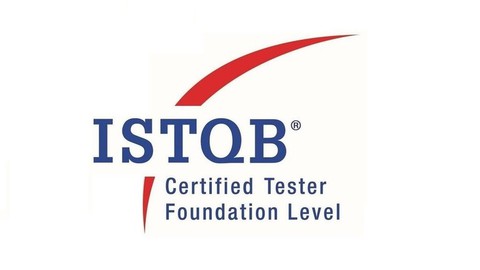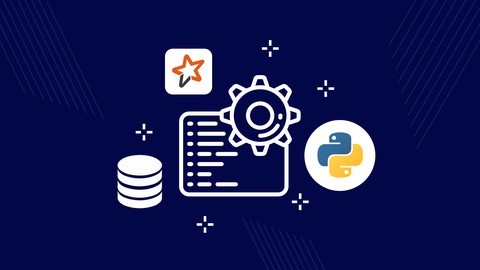Full Ethical Hacking & Penetration Testing Course | Ethical
Loại khoá học: Network & Security
Ethical Hacking, Penetration testing, Web hacking, Bug bounty, Metasploit, Security, more to be certified ethical hacker
Mô tả
Welcome to the "Full Ethical Hacking & Penetration Testing Course | Ethical" course
Ethical Hacking, Penetration testing, Web hacking, Bug bounty, Metasploit, Security, more to be certified ethical hacker
Whether you want to get your first job in IT security, become a white hat hacker, or prepare to check the security of your own home network, Oak Academy offers practical and accessible ethical hacking courses to help keep your networks safe from cybercriminals
Penetration testing skills make you a more marketable IT tech Understanding how to exploit servers, networks, and applications means that you will also be able to better prevent malicious exploitation From website and network hacking, to pen testing in Python and Metasploit, Oak Academy has a course for you
Ethical Hacking is in demand Learn Ethical Hacking penetration testing, web hacking, Metasploit & become an ethical hacker
Whether you want to get your first job in IT security, become a white hat hacker, or prepare to check the security of your own home network, Oak Academy offers practical and accessible ethical hacking courses to help keep your networks safe from cybercriminals
68% of business leaders say cybersecurity risks are increasing As threats rise, companies are trying hard to attract and retain more IT security talent
But filling IT security roles is proving difficult Many businesses are facing serious recruitment challenges There are not enough qualified candidates to fill the roles needed
The industry faces a skills gap that looks set to increase as cyber threats rise It is predicted that there will be 3 5 million unfilled cybersecurity roles by 2021 If you are considering a career move, the skills gap represents an excellent opportunity This course is a great start for you
This course starts at beginner levels so you don’t need to have previous knowledge of Ethical Hacking In this course, we will also cover the topic of Wi-Fi Hacking because Wi-Fi hacking is easier than hacking a device connected to that WiFi There are many free tools that can hack the less secure Wi-Fi router Apart from this, there are also advanced tools that work on backtrack and can even hack Wi-Fi router with high security
We are going to start by figuring out what the security issues are that are currently in the field and learn testing methodologies and types Then we are going to build a lab environment for you to apply what you get from the course and of course, the lab is gone cost you nothing Then we are going to start with some theory, you know, you should have the philosophy so we can always stay on the same page
Basic web and internet technologies such as HTML, HTTP, Document Object Model, and so on, these are absolutely needed so that we can complete the testing experience And then we are gonna cover the reconnaissance section, we will gather information about the target and how to use that information to model an attack After that, we will tackle the user management issues Apart from that, we will also try to expose the session management problems
In the input validation section, we are gonna show why data validation is absolutely important for web applications So attacks such as Cross-Site Scripting, SQL Injection, and many more we are gonna examine the whole bunch of different types We also have a cryptography section with some basic attacks After that, we will discuss some known web application attacks (such as Drupal SQL injection aka Druppageddon)
In this course I tried to show the importance of using free tools and platforms, so you don’t need to buy any tool or application
By registering the course you will have lifetime access all resources, practice videos, and will be able to ask questions about related topics whenever you want
A step by step approach will help you to track your progress on the go and learn needed skills gradually at your own pace At the end of this course, you will both have the knowledge and a practical skillset about using network scanning, finding vulnerabilities on systems, and learning the general competencies of ethical hackers
FAQ regarding Ethical Hacking :
What is Ethical Hacking and what is it used for ?
Ethical hacking involves a hacker agreeing with an organization or individual who authorizes the hacker to levy cyber attacks on a system or network to expose potential vulnerabilities An ethical hacker is also sometimes referred to as a white hat hacker Many depend on ethical hackers to identify weaknesses in their networks, endpoints, devices, or applications The hacker informs their client as to when they will be attacking the system, as well as the scope of the attack An ethical hacker operates within the confines of their agreement with their client They cannot work to discover vulnerabilities and then demand payment to fix them This is what gray hat hackers do Ethical hackers are also different from black hat hackers, who hack to harm others or benefit themselves without permission
Is Ethical Hacking a good career?
Yes, ethical hacking is a good career because it is one of the best ways to test a network An ethical hacker tries to locate vulnerabilities in the network by testing different hacking techniques on them In many situations, a network seems impenetrable only because it hasn’t succumbed to an attack in years However, this could be because black hat hackers are using the wrong kinds of methods An ethical hacker can show a company how they may be vulnerable by levying a new type of attack that no one has ever tried before When they successfully penetrate the system, the organization can then set up defenses to protect against this kind of penetration This unique security opportunity makes the skills of an ethical hacker desirable for organizations that want to ensure their systems are well-defended against cybercriminals
What skills do Ethical Hackers need to know?
In addition to proficiency in basic computer skills and use of the command line, ethical hackers must also develop technical skills related to programming, database management systems (DBMS), use of the Linux operating system (OS), cryptography, creation and management of web applications and computer networks like DHCP, NAT, and Subnetting Becoming an ethical hacker involves learning at least one programming language and having a working knowledge of other common languages like Python, SQL, C++, and C Ethical hackers must have strong problem-solving skills and the ability to think critically to come up with and test new solutions for securing systems Ethical hackers should also understand how to use reverse engineering to uncover specifications and check a system for vulnerabilities by analyzing its code
Why do hackers use Linux?
Many hackers use the Linux operating system (OS) because Linux is a free and open-source OS, meaning that anyone can modify it It’s easy to access and customize all parts of Linux, which allows a hacker more control over manipulating the OS Linux also features a well-integrated command-line interface, giving users a more precise level of control than many other systems offer While Linux is considered more secure than many other systems, some hackers can modify existing Linux security distributions to use them as hacking software Most ethical hackers prefer Linux because it's considered more secure than other operating systems and does not generally require the use of third-party antivirus software Ethical hackers must be well-versed in Linux to identify loopholes and combat malicious hackers, as it’s one of the most popular systems for web servers
Is Ethical Hacking Legal?
Yes, ethical hacking is legal because the hacker has full, expressed permission to test the vulnerabilities of a system An ethical hacker operates within constraints stipulated by the person or organization for which they work, and this agreement makes for a legal arrangement An ethical hacker is like someone who handles quality control for a car manufacturer They may have to try to break certain components of the vehicle such as the windshield, suspension system, transmission, or engine to see where they are weak or how they can improve them With ethical hacking, the hacker is trying to “break” the system to ascertain how it can be less vulnerable to cyberattacks However, if an ethical hacker attacks an area of a network or computer without getting expressed permission from the owner, they could be considered a gray hat hacker, violating ethical hacking principles
What is the Certified Ethical Hacker ( CEH ) Certification Exam?
The Certified Ethical Hacker (CEH) certification exam supports and tests the knowledge of auditors, security officers, site administrators, security professionals, and anyone else who wants to ensure a network is safe against cybercriminals With the CEH credential, you can design and govern the minimum standards necessary for credentialing information that security professionals need to engage in ethical hacking You can also make it known to the public if someone who has earned their CEH credentials has met or exceeded the minimum standards You are also empowered to reinforce the usefulness and self-regulated nature of ethical hacking The CEH exam doesn’t cater to specific security hardware or software vendors, such as Fortinet, Avira, Kaspersky, Cisco, or others, making it a vendor-neutral program
What is the Certified Information Security Manager ( CISM ) exam?
Passing the Certified Information Security Manager (CISM) exam indicates that the credentialed individual is an expert in the governance of information security, developing security programs and managing them, as well as managing incidents and risk For someone to be considered “certified,” they must have passed the exam within the last five years, as well as work full-time in a related career, such as information security and IT administration The exam tests individuals’ knowledge regarding the risks facing different systems, how to develop programs to assess and mitigate these risks, and how to ensure an organization's information systems conform to internal and regulatory policies The exam also assesses how a person can use tools to help an organization recover from a successful attack
What are the different types of hackers?
The different types of hackers include white hat hackers who are ethical hackers and are authorized to hack systems, black hat hackers who are cybercriminals, and grey hat hackers, who fall in-between and may not damage your system but hack for personal gain There are also red hat hackers who attack black hat hackers directly Some call new hackers green hat hackers These people aspire to be full-blown, respected hackers State-sponsored hackers work for countries and hacktivists and use hacking to support or promote a philosophy Sometimes a hacker can act as a whistleblower, hacking their own organization in order to expose hidden practices There are also script kiddies and blue hat hackers A script kiddie tries to impress their friends by launching scripts and download tools to take down websites and networks When a script kiddie gets angry at…
FAQ regarding Penetration Testing :
What is penetration testing?
Penetration testing, or pen testing, is the process of attacking an enterprise's network to find any vulnerabilities that could be present to be patched Ethical hackers and security experts carry out these tests to find any weak spots in a system’s security before hackers with malicious intent find them and exploit them Someone who has no previous knowledge of the system's security usually performs these tests, making it easier to find vulnerabilities that the development team may have overlooked You can perform penetration testing using manual or automated technologies to compromise servers, web applications, wireless networks, network devices, mobile devices, and other exposure points
What are the different types of penetration testing?
There are many types of penetration testing Internal penetration testing tests an enterprise's internal network This test can determine how much damage can be caused by an employee An external penetration test targets a company's externally facing technology like their website or their network Companies use these tests to determine how an anonymous hacker can attack a system In a covert penetration test, also known as a double-blind penetration test, few people in the company will know that a pen test is occurring, including any security professional This type of test will test not only systems but a company's response to an active attack With a closed-box penetration test, a hacker may know nothing about the enterprise under attack other than its name In an open-box test, the hacker will receive some information about a company's security to aid them in the attack
What are the different stages of penetration testing?
Penetration tests have five different stages The first stage defines the goals and scope of the test and the testing methods that will be used Security experts will also gather intelligence on the company's system to better understand the target The second stage of a pen test is scanning the target application or network to determine how they will respond to an attack You can do this through a static analysis of application code and dynamic scans of running applications and networks The third stage is the attack phase, when possible vulnerabilities discovered in the last stage are attacked with various hacking methods In the fourth stage of a penetration test, the tester attempts to maintain access to the system to steal any sensitive data or damaging systems The fifth and final stage of a pen test is the reporting phase, when testers compile the test results
Here’s just some of what you’ll learn by the end of the course,
Understand the main terminology of Network Scanning and Finding Vulnerabilities in devices in a network
Using Nmap with full knowledge and experience
How to scan a network for scripts
Learn about network scan types
Learn how to use Hping
Wireless Operating Modes: Ad-hoc, Infrastructure, Monitor modes
Wireless Packet Types
Analysing Packet Types with Wireshark
Wi-Fi Network Interaction, Authentication MethodsWEP vs WPA/WPA2
What is the TCP/IP model and how does it work
What is OSI model? How does it work
What is Port? What is the TCP/UDP port
How to scan TCP or UDP services
How active services are detected
How to scan without getting caught in IPS & IDS systems
How to interpret Nmap outputs
Nmap scripting (NSE) and more
WPA/WPA2 Cracking using GPUs with Hashcat
Key Reinstallation Attacks (KRACK)
WPS PIN Attacks and more
How open source intelligence (OSINT) can be gathered and used for hacking into systems
How to send fake emails
Learn about vishing (Voice Phishing) tools and techniques
How to use Empire Project, MSFvenom, Veil, and TheFatRat
Testing Methodologies and Types,
Basic Web and Internet Technologies such as HTML, HTTP, Document Object Model and so on,
To Gather Information About the Target and Use This Information to Model an Attack
User Management Issues
Exposing The Session Management Problems
Data Validation
Wardriving with Kismet, Mapping with Google Earth
Rogue Access Points with Airbase-ng, Wifi Pumpkin 3, Fluxion
Handshake Snooper and Captive Portal Attack with Fluxion
Attacks such as Cross-Site Scripting, SQL Injection and many more
Some Basic Attacks in Cryptography
Web Application Attacks Such As Drupal SQL injection ( aka Druppageddon )
And More to Enrich Your Penetration Testing Skills
Network Security
ethical
Ethical Intelligence
nmap nessus
nmap course
nmap metaspolit
Complete nmap
Kali linux nmap
ethical hacking
penetration testing
bug bounty
hack
cyber security
kali linux
android hacking
network security
hacking
security
security testing
nmap
metasploit
metasploit framework
penetration testing
oscp
security testing
windows hacking
exploit
bug bounty
bug bounty hunting
website hacking
web hacking
pentest+
pentest plus
OSINT (Open Source Intelligent )
social engineering
phishing
social engineering tool kit
ethical hacking hacking penetration testing oak academy full ethical hacking metasploit ethical hacking and penetration testing full ethical hacking course full ethical hacking and penetration testing course web hacking full ethical hacking penetration testing course ethical hacking full course full ethical hacking and penetration hack full ethical hacking penetration testing course ethical hacking course web penetration ethical hacker full ethical wifi hacking ethical penetration hacker full web ethical hacking course full ethical hacking & penetration testing hacking full course full hacking course full hacking hacking course nessus kismet armitage cyber security web penetration testing web application penetration testing full ethical hacking & penetration full ethical hacking and penetration testing course ethical hacking full
And much, much more We have also added practical lab sessions in our course for sharping up your skills
Fresh content
It’s no secret how technology is advancing at a rapid rate New tools are released every day, and it’s crucial to stay on top of the latest knowledge for being a better security specialist
Video and Audio Production Quality
All our videos are created/produced as high-quality video and audio to provide you the best learning experience
You will be,
Seeing clearly
Hearing clearly
Moving through the course without distractions
You'll also get:
Lifetime Access to The Course
Fast & Friendly Support in the Q&A section
Udemy Certificate of Completion Ready for Download
Dive in now!
We offer full support, answering any questions
See you in the "Full Ethical Hacking & Penetration Testing Course | Ethical" course!
Ethical Hacking, Penetration testing, Web hacking, Bug bounty, Metasploit, Security, more to be certified ethical hacker
IMPORTANT: This course is created for educational purposes and all the information learned should be used when the attacker is authorized
Bạn sẽ học được gì
Ethical hacking involves a hacker agreeing with an organization or individual who authorizes the hacker to levy cyber attacks on a system or network.
In addition to proficiency in basic computer skills and use of the command line, ethical hackers must also develop technical skills related to programming.
Ethical hacking is a good career because it is one of the best ways to test a network. An ethical hacker tries to locate vulnerabilities in the network.
Many hackers use the Linux operating system (OS) because Linux is a free and open-source OS that anyone can modify it. It’s easy to access and customize .
Ethical hacking is legal because the hacker has full, expressed permission to test the vulnerabilities of a system. An ethical hacker operates.
The different types of hackers include white hat hackers who are ethical hackers and are authorized to hack systems.
Whether you want to get your first job in IT security, become a white hat hacker, or prepare to check the security of your own home network.
The Certified Ethical Hacker (CEH) certification exam supports and tests the knowledge of auditors, security officers, site administrators
Passing the Certified Information Security Manager (CISM) exam indicates that the credentialed individual is an expert in the governance of information security
Penetration testing skills make you a more marketable IT tech. Understanding how to exploit servers, networks, and applications.
Penetration testing, or pen testing, is the process of attacking an enterprise's network to find any vulnerabilities that could be present to be patched.
Penetration tests have five different stages. The first stage defines the goals and scope of the test and the testing methods that will be used.
There are many types of penetration testing. Internal penetration testing tests an enterprise's internal network. This test can determine.
With Nmap, you will learn to identify the operating system and running service versions of the target system
Full Ethical Hacking & Penetration Testing Course
Advanced Web Application Penetration Testing
Terms, standards, services, protocols and technologies
Setting up Virtual Lab Environment
Modern Web Applications
Web Application Hosting
Discovering Web applications on the Same Server
Learn Nmap Basic and Advanced Scanning Techniques
Learn about network scan types
You will learn options for bypassing firewall, IPS & IDS systems with Nmap
How to scan without getting caught in IPS & IDS systems
What is Port ? What is TCP/UDP port ?
How to scan TCP or UDP services?
Importance of Penetration Testing
Types of Penetration Testing
Metasploit Filesystem and Libraries
Nmap Integration and Port Scanning
SMB and Samba Enumeration
Exploitation and Gaining Access
Post-exploitation-Meterpreter
Meterpreter Python/Powershell Extension
Antivirus Evasion and Cleaning
The very latest up-to-date information and methods
During the course you will learn both the theory and how to step by step setup each method
Learn how to create undetectable malware using MSFvenom, Veil, TheFatRat, Empire Project, etc
Learn embedding malware in pdf and doc files
Learn the working mechanism of Social Engineering Toolkit
Learn social engineering techniques and terminologies
Learn how to collect information about people by using OSINT (Open Source Intelligence)
Learn how to use FOCA, Web Archieve, The Harvester & Recon-NG
Wireshark: Sniffing the Network Traffic
Hping for Active Scan and DDoS Attacks
Ping Scan to Enumerate Network Hosts
Exploitation Tool: Metasploit Framework (MSF)
Information Gathering Over the Internet Tools
Wi-Fi Adapter Settings
Wi-Fi Network Fundamentals,IEEE 802.11
Wireless Operating Modes : Ad-hoc, Infrastructure, Monitor modes.
Wi-Fi Network Interaction, Authentication Methods
ethical hacking
hacking
penetration testing
full ethical hacking
metasploit
ethical hacking and penetration testing
full ethical hacking course
full ethical hacking and penetration testing course
Yêu cầu
- Minimum 8 GB RAM for ethical hacking and penetration testing
- 100 GB Free Harddisk space for full ethical hacking course
- 64-bit processor for full ethical hacking and penetration testing course
- Wi-Fi Adapter(for Wi-Fi Hacking Sections)
- Microsoft Windows 7, 8, 10 or Apple Mac OS X 10.12 and later versions
- Enable virtualization technology on BIOS settings, such as “Intel-VTx”
- A strong desire to understand hacker tools and techniques in ethical hacking
- Be able to download and install all the free software and tools needed to practice in hacking
- A strong work ethic, willingness to learn and plenty of excitement about the back door of the digital world
- Nothing else! It’s just you, your computer and your ambition to get started today in penetration testing
- All items referenced in this ethical hacking course are Free
Nội dung khoá học
Viết Bình Luận
Khoá học liên quan

Đăng ký get khoá học Udemy - Unica - Gitiho giá chỉ 50k!
Get khoá học giá rẻ ngay trước khi bị fix.









![[NEW] Spring Security 6 Zero to Master along with JWT,OAUTH2](/uploads/courses/udemy/3485044_ef54_2.jpg)








Đánh giá của học viên
Bình luận khách hàng